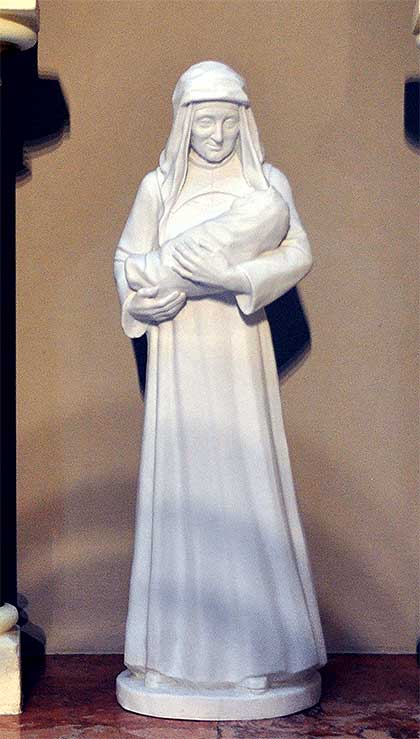Name that Saint: St. Louise de Marillac
Name that Saint: St. Louise de Marillac

The life and sanctity of St. Louise de Marillac was shaped by decades of suffering. Yet, despite her larger-than-life trials, recent biographers have shown us a woman who was vibrant, attractive, witty, and charming. She is proof that regardless of our background or circumstances, if we’re open to God and His will, we can be imbued with love, and our lives can have profound meaning.
Although Louise was born into aristocracy, her childhood was devoid of the comforts most wealthy children experience. Louise never knew her mother. By all accounts, her father loved her deeply, even stating in his will “that [Louise] had been his greatest consolation in the world, and that he thought she had been given him by God for his peace of mind in the afflictions in life.”[1] But he remarried when she was very young, and her stepmother, who was a widow with three children of her own, did not welcome Louise in their newly established family. Instead, Louise was sent to a Dominican convent where girls of noble birth were taught. But God was with her. One of the Dominican nuns was her great-aunt, and from her (and the other sisters) Louise received motherly love. She also received an excellent intellectual and spiritual education – and a fondness for painting. But when she was 12 years old, she was sent to a simple boarding school where she learned practical, household skills.
While living at the boarding school, Louise was hit with another loss: the death of her father. Her uncle Michel, the Chancellor of France, became her guardian. He was a pious man who was heavily involved in a French Renewal during the 17th century, to which a number of great saints and blessed were also linked. Louise knew many other people involved in this movement, and its spirituality impacted her profoundly.
When she told her uncle, Michel, that she was interested in joining the Capuchin nuns, he arranged a meeting with the Order’s Provincial. Louise applied but was not admitted, possibly because of her health. This was another great source of pain. In time, her uncles, Michel and Octavien, suggested marriage to Antoine La Gras. While he wasn’t from nobility, his job was an illustrious one: he was the secretary to the Queen Mother of France. Louise and Antoine were married in February 1613, and most histories claim they had a happy marriage in which one son, Michel-Antoine, was born. A year later, her uncle, Octavien, died, and three years later, his wife. While her uncle, Michel, was named guardian of the children, Antoine was in charge of managing their finances. It was a stressful and difficult period for them.
A decade later, tragedy, once again, would strike. Antoine was diagnosed with an incurable disease and became bedridden. Louise nursed him for more than two years, but he died in December of 1625.
Shortly around the same time, during a period of civil unrest, two of Louise’s uncles were imprisoned. Michel was arrested and thrown in jail, where he died; his brother Louis was executed.
While these tragedies were unfolding, Louise met St. Vincent de Paul, who would eventually become her spiritual director. With their love for the poor and suffering, Louise and Vincent started the Daughters of Charity in 1633.
Louise had a life filled with suffering, yet God was always present, always guiding her, and always shaping situations to prepare her for the special role she would play in the Church. Yet, for all her sorrows, Louise remained tender and loving.
Louise died on March 15, 1660, just a few months before Vincent de Paul. She was proclaimed a saint in 1934 and named the Patroness of Christian Social Workers in 1960.
Be sure to watch for our article on St. Louise and her hidden artistry talents by Fr. Bob Maloney, CM, in our next edition of the Miraculous Medal Message.
————————————-
[1] A Woman Named Louise: 1591-1633, Kieran Kneaves D
Get InSPIREd!
Sign up below and receive our monthly inspirational Newsletter dedicated to Mary!


